Top 10 Most Dangerous Sea Creatures Of All Times
The ocean has many times surprised us with a wide range of marine animals. Some are magnificent, but others are too dangerous. On the below list given by ... read more...Toplist, readers will find the top 10 most dangerous sea creatures of all time.
-
This famously venomous box jellyfish frequently ranks first among the world's most dangerous water animals. They are named for their body shape which has tentacles covered in biological booby traps known as nematocysts - tiny darts containing poison.
While it may not appear to be dangerous, its sting can be fatal. In less than five minutes, the sting can kill you. Its venom is dangerous enough to kill up to 60 people. People and animals who are bitten and receive this venom may endure paralysis, cardiac arrest, and even death within minutes of being stung. The box jellyfish can swim, unlike some jellyfish, which means they can hunt for prey and migrate through the ocean more quickly. However, of the 50 species of box jellyfish, which are also called sea wasps, only a few have venom that can be life-threatening to humans. Box jellyfish can be found in warm coastal waters all over the world, but the fatal types are only found in the Indo-Pacific and northern Australia.
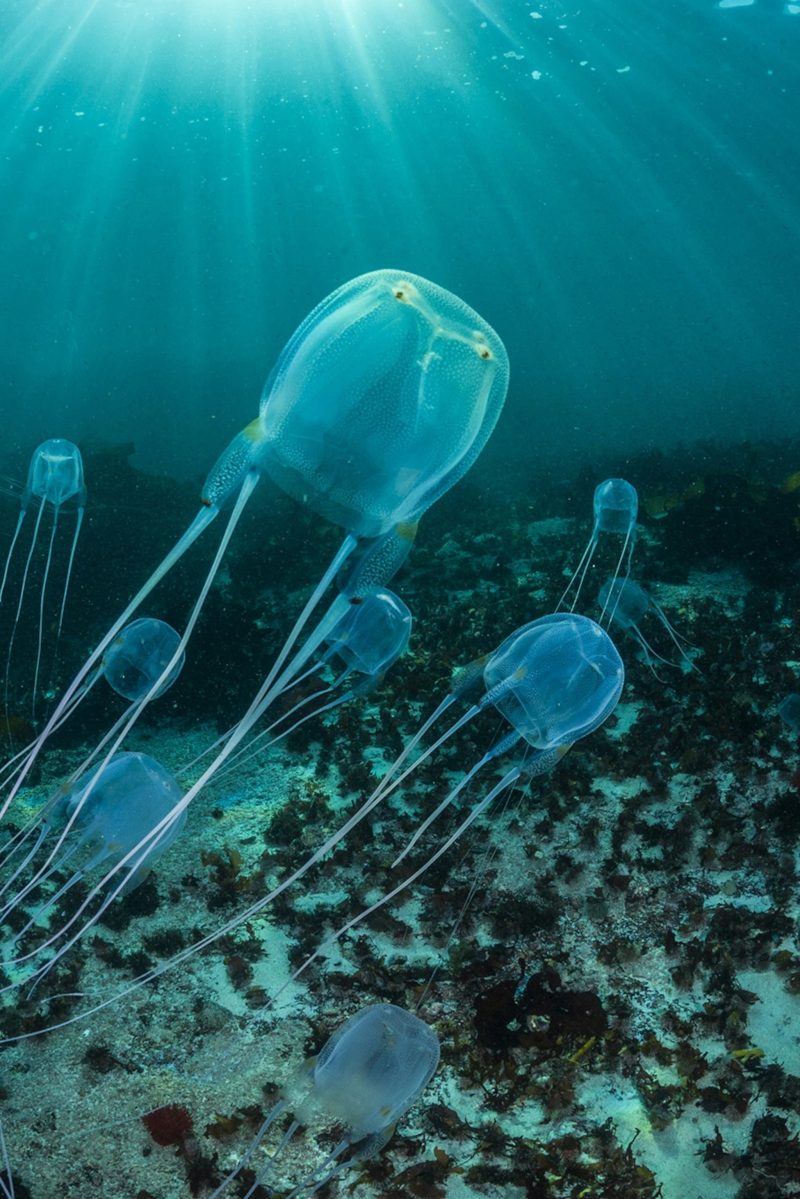
Photo: National Geographic 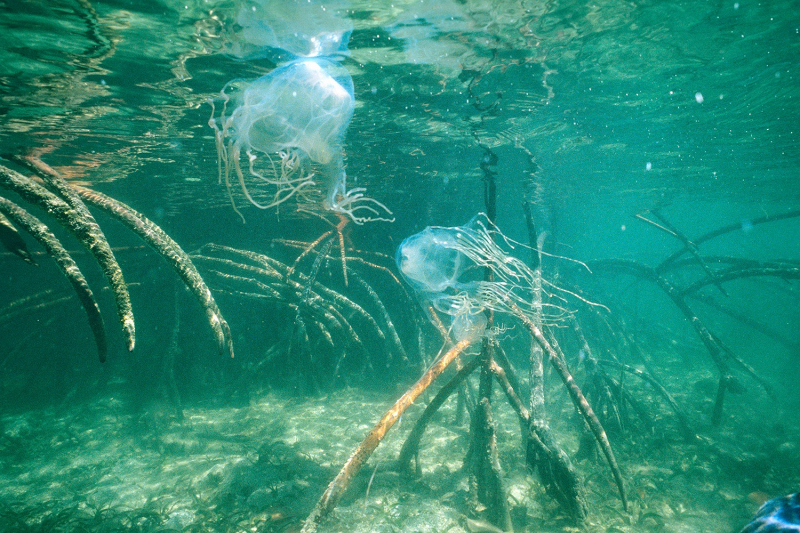
Photo: People -
The blue-ringed octopus is a little octopus that dwells in tidal pools in the Pacific and Indian oceans. It is both beautiful and deadly at the same time. Their yellow skin and blue and black rings make them highly identifiable. Crabs, shrimp, and other small creatures are their usual prey.
Scientists have labeled them as one of the most hazardous marine animals on the planet. It can be explained by a potent neurotoxin called tetrodotoxin, which is a potentially-deadly substance also found in pufferfish. The victim who is stung by blue-ringed octopus might expect total body paralysis. If stung in deep enough water, this can lead to drowning. They can experience different symptoms, including nausea, vision loss or blindness, loss of senses, and loss of motor skills. The good news is this small deadly octopus is not aggressive. It’s only likely to bite humans if touched or attacked.
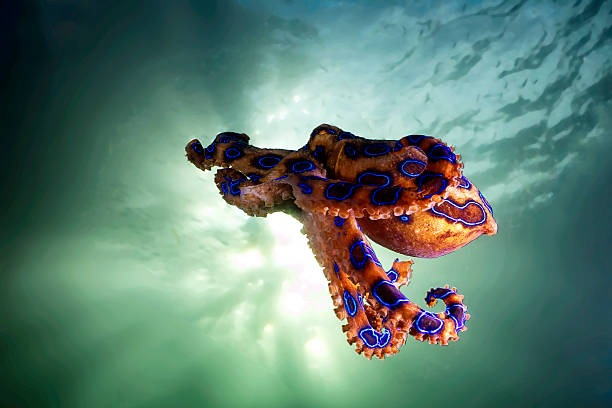
Photo: iStock Source: They will Kill you -
Flower urchin often lives in coral reeds, seagrass, and sandy environments. This creature get their name from their flower-like patterning and pinkish coloring. There are about 200 different species throughout the world's waters. They can be found in various places, such as Okinawa in Japan, Tasmania in Africa, Australia, Red Sea, Africa East Coast, and Crook Islands. Because of the vast area that the oceans cover on the planet, determining the population of sea urchin flowers is quite challenging.
Flower urchin gets their name from their flower-like patterning and pinkish coloring. This species is regarded as the world's most hazardous urchin. While the sting of a flower urchin does not kill the marine animal, it is powerful enough to cause considerable discomfort and slow down stung creatures. If touched, it will deliverpainful stings that can lead to hospitalization, adding to paralyzed tongue, lips, eyes, and musicale. The symptoms include dizziness, difficulty breathing, and the inability to speak.
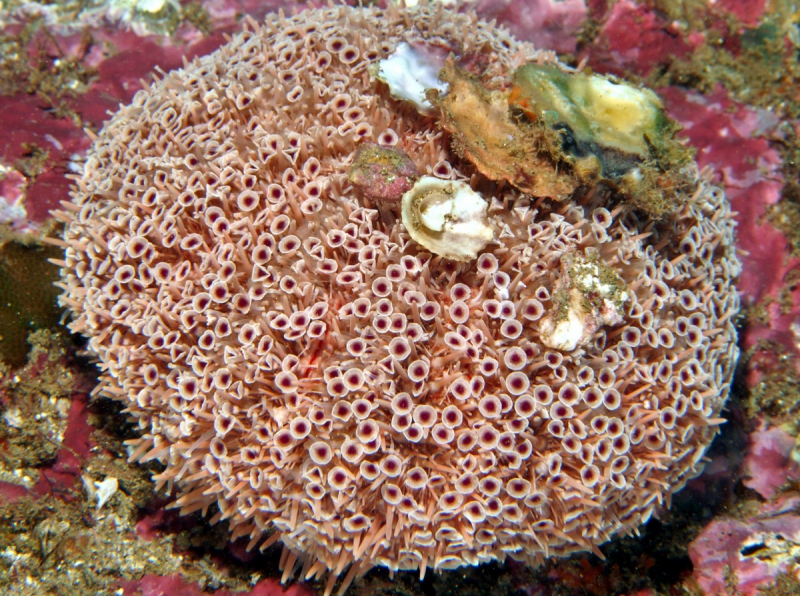
Photo: Reef Guide 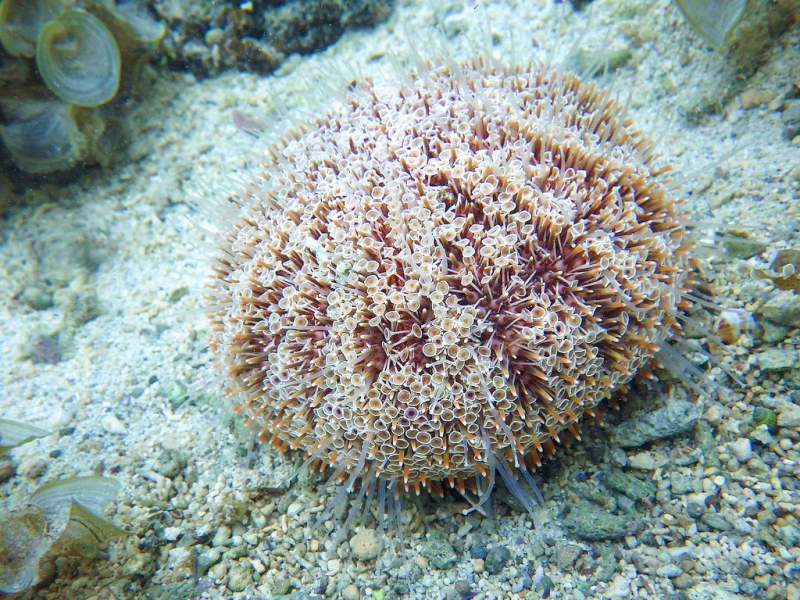
Photo: Flickr -
Titan Triggerfish can be found on coral reefs all across the world, from Australia to Thailand. Titan triggerfish have densely scaled bodies with dark cores and are green or dark gray. On the dorsal and anal fins, there are black borders. Divers who get too close to nests have been reported to be bitten by this fish. When diving near coral reefs, they should be avoided at all costs.
Titan Triggerfish can reach lengths of up to 75 centimeters and eat sea urchins, tube worms, coral, and mollusks. They have also been notorious for acting aggressively toward other fish. The titan triggerfish nest is often found in a flat sandy location and is fiercely guarded by the female with the help of the first dorsal spine against intruders. Although their bites are not venomous, they are unpleasant and can cause considerable harm. In addition, ciguatoxin, a natural poison that is harmless to other fish but deadly to humans, is occasionally released.
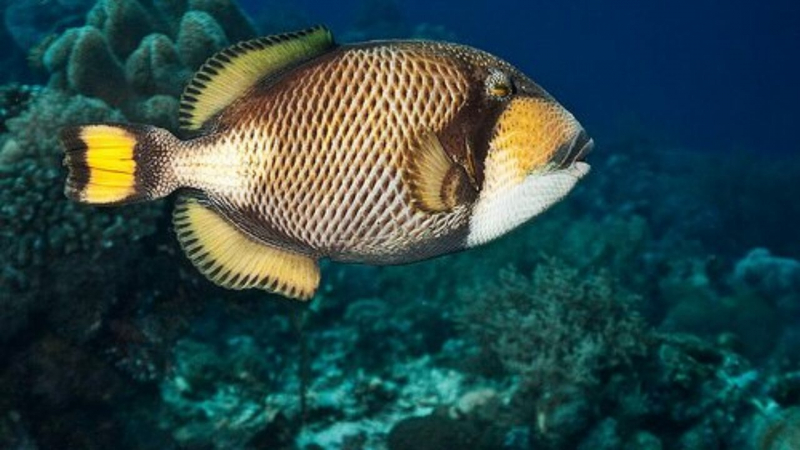
Photo: Scuba Source: BBC Earth -
The stonefish is considered one of the most dangerous sea creatures. They can be found near the Indian and Pacific Ocean shores. Stonefish are masters of camouflage, blending in so well with their surroundings that prey, predators, and even human scuba divers have difficulty spotting them. After waiting for hours, stonefish strike when their potential meal is less than a body length away. Their muscular jaws and big lips apply so much pressure to their prey that they can simply suck it down and consume it whole.
In nature, the stonefish uses its venom to prevent predation rather than acquire prey. Their stings are extremely painful, result in terrible pain, swelling, necrosis (tissue death) and can lead to hospitalization or even death. Swimmers frequently walk on these fish, causing the poison to enter the bottom of the foot. Swimmers picking up these fish in the water or on the beach can also sometimes cause stings.
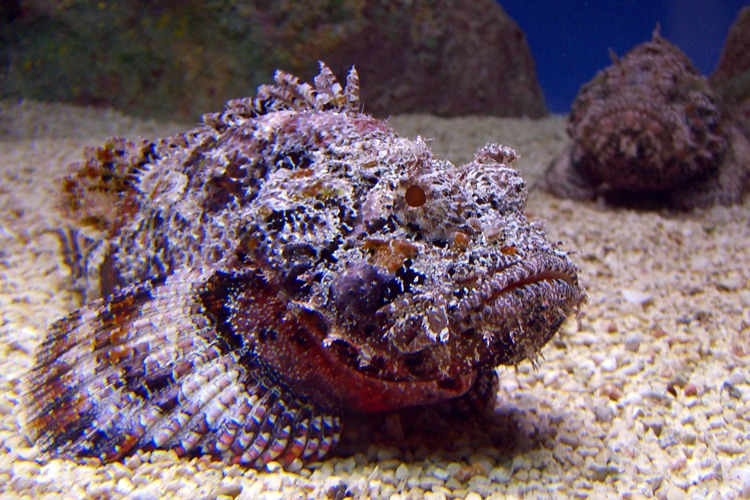
Photo: Suffer Today Source: National Geographic -
Cone snails are a type of marine snail that is particularly poisonous. There are more than 600 species on the planet. Shallow reefs are home to cone snails. They are often partially buried under sandy sediment, rocks, or coral in tropical and subtropical waters. Despite their unassuming look, they are capable of stinging humans and should never be handled. Their shells are generally brightly colored and have intricate designs, which is a terrible human attraction and a predator deterrent.
Snails sting by extending a long flexible tube known as a proboscis and then launching a venomous, harpoon-like tooth. Their venom is extremely harmful to humans and can be lethal. A drop of cone snails' venom can kill up to 20 people. A cone snail sting can cause mild to moderate discomfort, as well as redness and swelling. Its conus toxins have an effect on the nervous system and can cause paralysis, which can lead to respiratory failure and death. Surprisingly, the same venom has been examined for possible medical use.
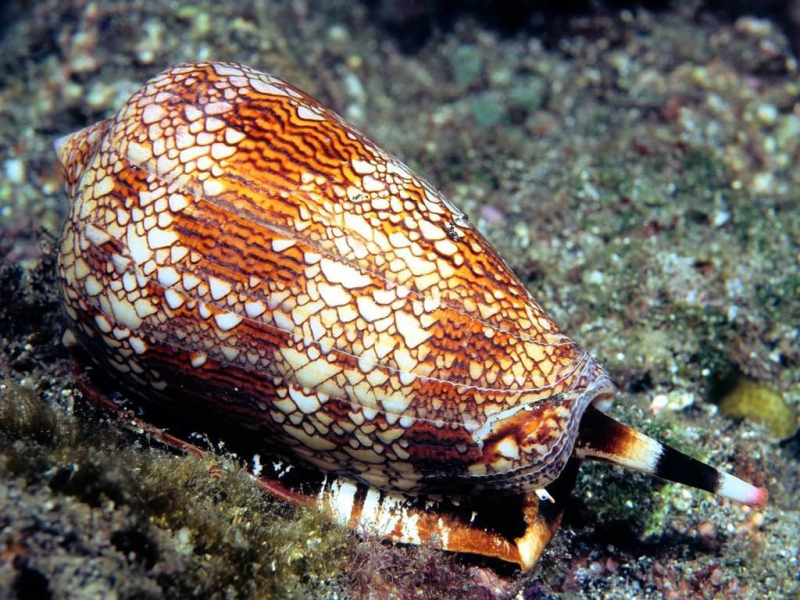
Photo: Reddit 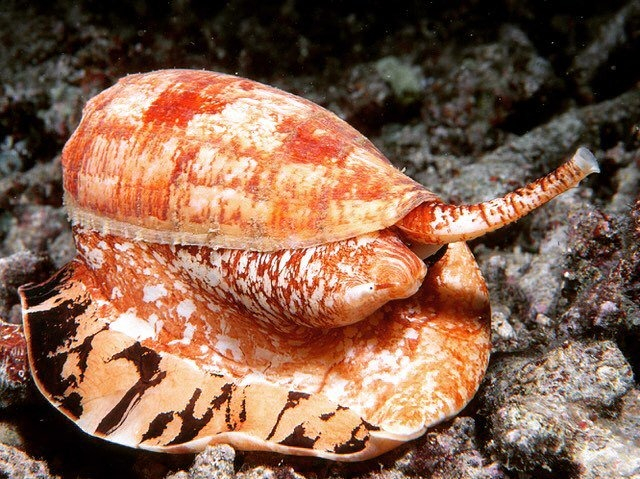
Photo: Twitter -
These venomous snakes, which can be found in warm coastal waters, are one of the most dangerous sea creatures in the underwater world. Because of their compact bodies, sea snakes are frequently mistaken for eels. They need to surface frequently because they breathe air. They range in intensity from gentle to violent. While some sea snakes can be handled safely, others are said to be avoided.
Unlike terrestrial snakes, which can wait for their meal to perish from their venom, sea snakes must have a fast-acting venom to prevent their prey from escaping to deeper depths. Therefore, sea snakes' venom is much more toxic than their land counterpart. The venom of the Beaked Sea Snake, for example, is so poisonous that only three drops can kill eight people. The majority of them are reluctant to bite. However, one species, Hydrophis platurus, contains venom that is greater and more potent than any other terrestrial snake. There have been a few deaths reported, but not many.
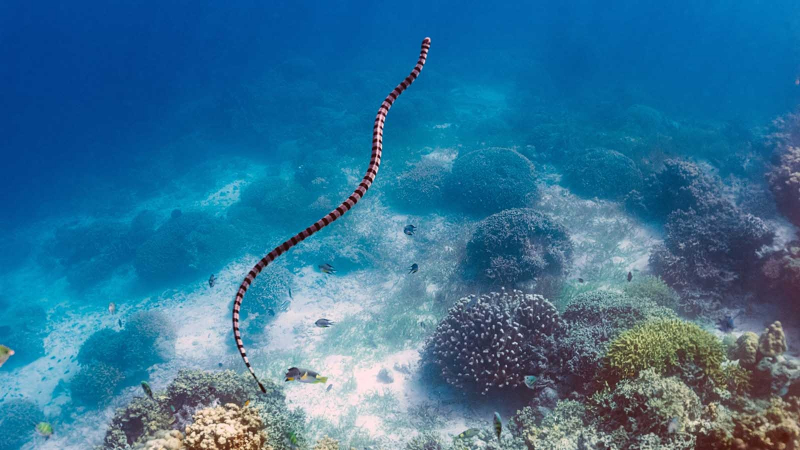
Photo: How Stuff Works Source: What Lurks Below -
Barracuda are predatory fish that are notorious for being one of the most dangerous marine creatures of all time. They are aggressive saltwater fishes and live in tropical and subtropical waters, often found near coral reefs. They have a large, unmistakable snout shape and fanged teeth. Their underbite is caused by their pointy skulls.
When attacking prey, barracudas can reach speeds of up to 27 miles per hour (43 kilometers per hour). Its jaws are very powerful and can pose threat to any prey. Barracuda sometimes confuse snorkelers for prey and attack them. Such attacks usually involve a single, powerful hit that results in a laceration and some tissue loss. In addition, gastrointestinal maladies caused by barracuda can last several days, adding to general weakness in their arms and legs. The sickness is serious, and the symptoms might persist for weeks. These attacks, however, are uncommon.
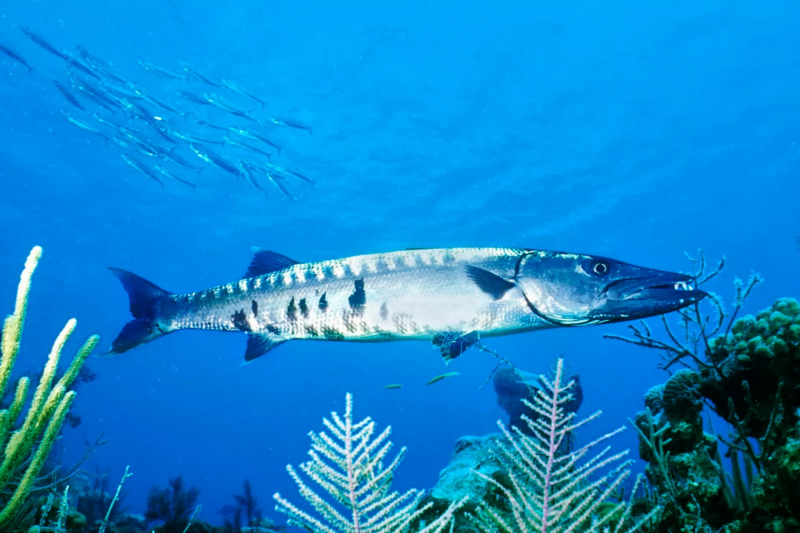
Photo: DK Find Out 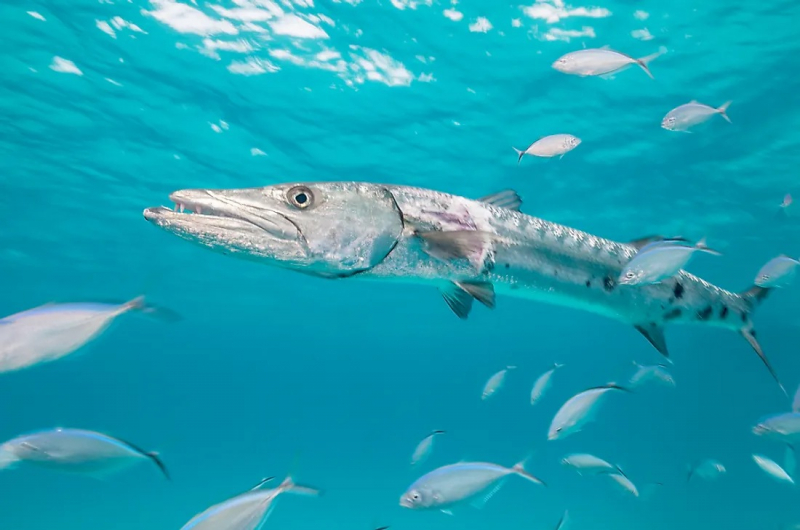
Photo: World Atlas -
The lionfish is also called zebrafish or firefish. They look beautiful but are one of the most venomous marine creatures. They're brightly colored, with red, white, and black bands. Their bodies are covered in spiny fins that protrude outward.
Lionfish are good predators that pose a threat to divers and fishermen. The venom contains a neuromuscular toxin with a toxicity similar to cobra venom. When a lionfish's spine penetrates the skin of predators, the venom is released. It is perilous to get into contact with lionfish, yet they are not aggressive fish.
When a person is stung, they can experience everything from excruciating pain to vomiting and difficulties breathing. Diarrhea, heartburn, headaches, and numbness are all possible side effects. The pain from a lionfish sting is usually severe for the first several hours, then gradually lessens. The pain could last up to 12 hours or longer to go away. Their venom is rarely lethal, but severe allergic reactions have resulted in hospitalization and death in the past.
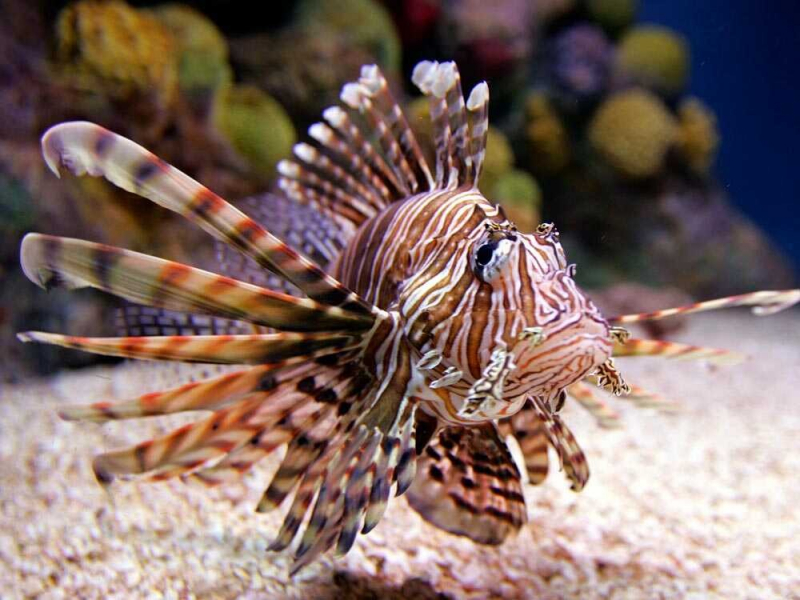
Photo: NPR Source: National Geographic -
In fact, the stingray is one of the most dangerous sea creatures of all time because of its deadly sting. They crawl into the sand in shallow seas and can hurt if swimmers stepped on them. Stingrays can be found all around the world in tropical and subtropical waters. There are roughly 220 different species.
The tail of a stingray is long, slender, and tapering, like a whip. A sheath covers one or more barbed spines at the end of the tail. Each stingray's spine contains venom, and the stingray's tail may deliver a severe, excruciating sting. Stingrays hide in the sand to seek prey, making them difficult to spot and easy to step on if you don't notice them. If stingrays are attacked, they will defend themselves by whipping their tail, which can extend up and over their head, causing a cut or puncture hole on your skin.
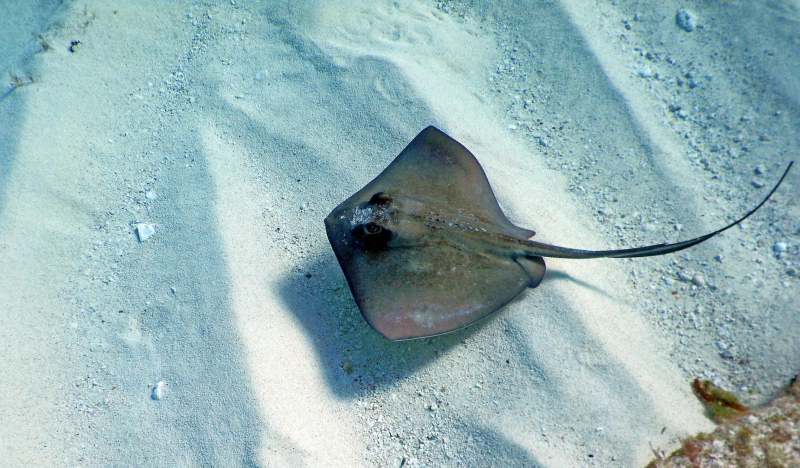
Photo: Live Science 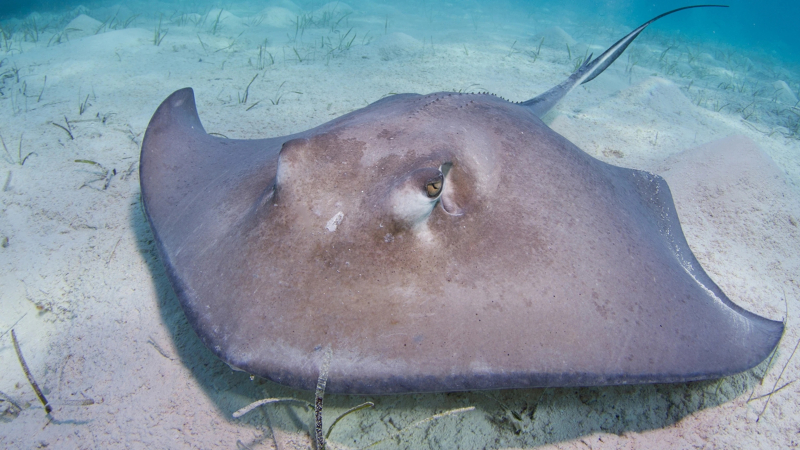
Photo: National Geographic Kids





























